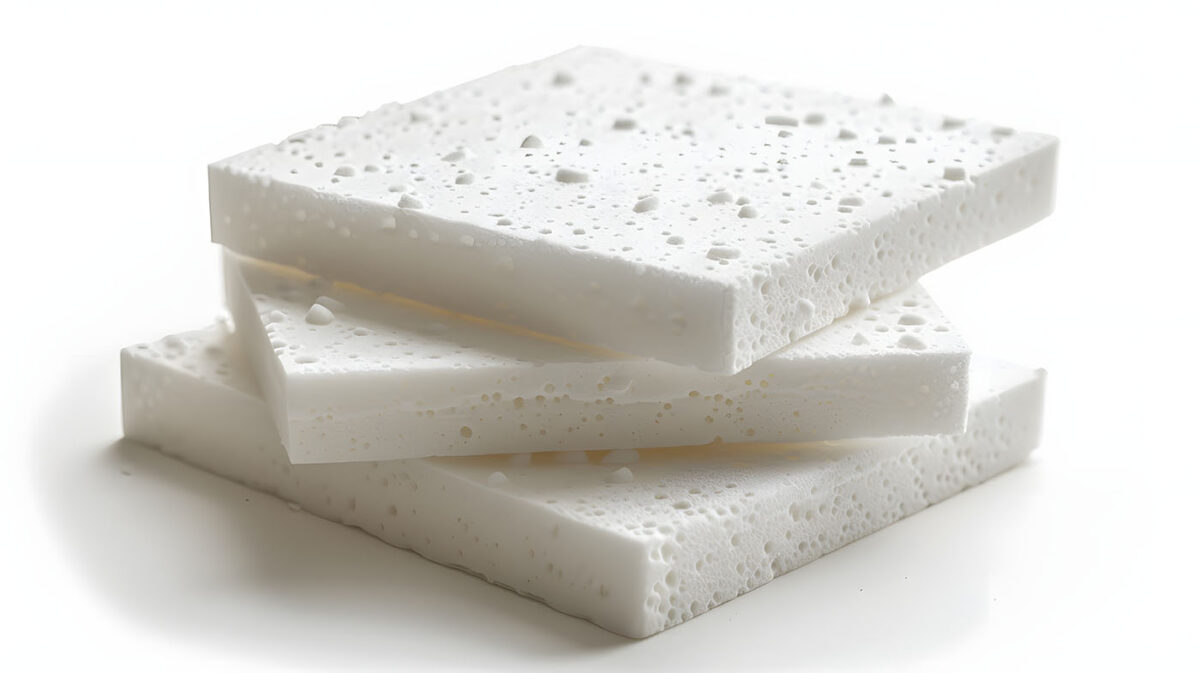Effective Pollutant Absorption Using Polyurethane Foams

Recent research has focused on various formulations and modifications of PU foams to boost their pollutant-scrubbing capabilities, highlighting their potential in addressing air and water pollution.
Researchers are enhancing the surface chemistry of PU foams to improve their affinity for pollutants. By modifying the foam’s surface with specific functional groups, scientists increase its capacity to capture and retain various pollutants, including volatile organic compounds (VOCs), heavy metals, and organic chemicals. Moreover, fine-tuning the pore structure of PU foam optimizes pollutant capture. Controlling pore size and distribution enhances the foam’s surface area. Consequently, this improves its adsorption capacity, significantly boosting pollutant scrubbing performance.
You can also read: Polyurethane: Sustainable & Digital Check
Case Studies on Pollutant Absorption
SARS-CoV-2 Removal from Water
A study published in “Environmental Science and Pollution Research” detailed the development of a PU Biofoam composite for removing SARS-CoV-2 from water. This Biofoam, made using dregs waste from the pulp and paper industry, achieved a removal efficiency of 91.55%. The study demonstrated that incorporating various fillers into PU foams could enhance pollutant removal capabilities.
Crude Oil Removal
Another study focused on impregnating PU foams with lignin to remove crude oil from contaminated water. The research showed that the foam’s high surface area and porosity significantly contributed to its effectiveness in absorbing hydrocarbons. Consequently, this makes it a viable option for oil spill remediation.
Additionally, recent advancements in modifying PU foams have further enhanced their capabilities in tackling oil pollution. Therefore, PU foams have become a crucial component in environmental conservation efforts.
Moreover, the hydrophobic and oleophilic properties ensure selective oil absorption while repelling water. This makes PU foams ideal for separating oil from water bodies. Furthermore, their reusability and cost-effectiveness provide a sustainable solution for large-scale oil spill clean-ups.
Recycling and Sustainability Efforts
The PUReSmart project, supported by the European Union Horizon 2020 Research and Innovation Program, created technologies for end-of-life (EoL) treatments of polyurethane (PU) products. Researchers combined chemical and mechanical recycling methods to recover and valorize polyurethane waste. The project aimed to shift from a linear life cycle to a circular economy model for PU products, ensuring sustainable and efficient material recovery
Industrial Applications for PU and Future Prospects
Researchers are actively investigating the utilization of polyurethane (PU) foams in air purification systems to effectively capture airborne pollutants from sources such as industrial emissions, power plants, and transportation. The inherent high absorbency and customizable properties of PU foams make them particularly suitable for these applications.
Future advancements in PU foam technology are expected to focus on developing materials with enhanced absorption capacities and specific selectivity for various pollutants. Incorporating nanomaterials like graphene oxide or carbon nanotubes will further improve the structural and functional properties of the foams.
Driven by the push towards sustainability, innovations in the manufacturing processes of PU foams are underway. Researchers are exploring the creation of bio-based polyurethane foams derived from renewable resources, aiming to reduce the environmental impact of foam production and promote a more sustainable lifecycle for these materials. Additionally, efforts are being made to develop non-isocyanate polyurethane foams to eliminate the use of toxic isocyanates, providing a greener alternative.
